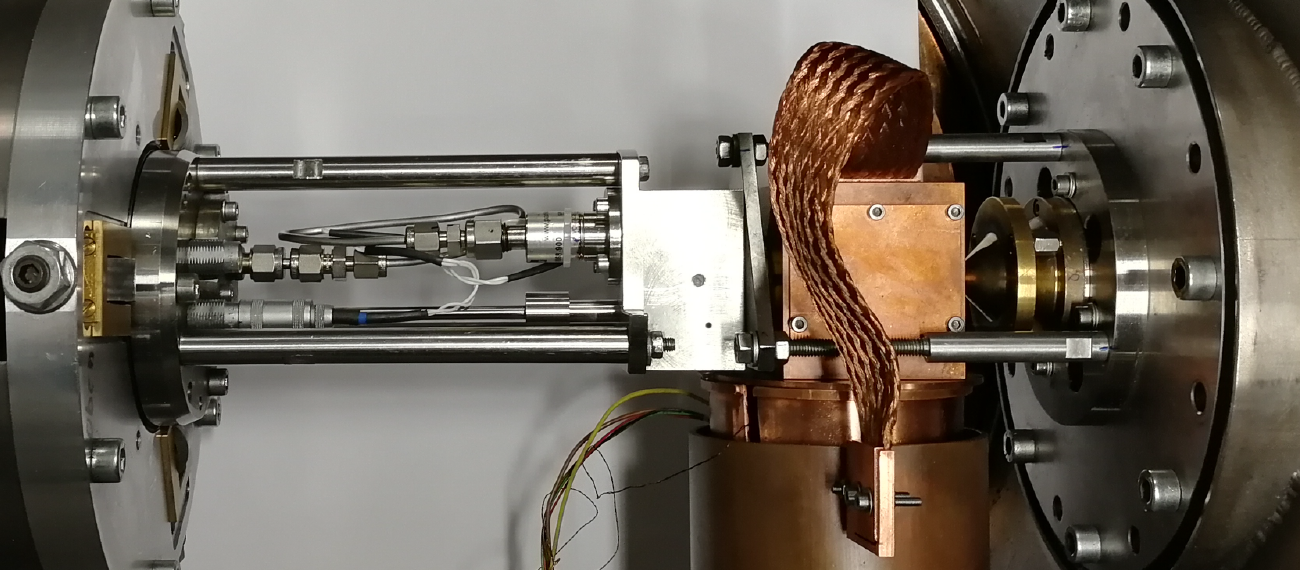The determination of magnetic moments with the deflection methods described before are typically subject to systematic and statistical errors in the range of 1 % or more. In the 1930s, the magnetic resonance method in molecular beams (MBMR) was developed for atoms, which made it possible to achieve accuracies in the ppm range. The observation of superatomic behaviour of Mn@Sn12 and some further doped tin clusters now opens up the possibility to carry out this kind of measurement on clusters to determine their magnetic moments with previously unattained precision. In addition, such spin resonance experiments could resolve hyperfine interactions, providing information on the distribution of the electron density in the cluster and the interaction between cage and dopant atom in endohedral cage clusters.
For this experiment, two Stern-Gerlach magnets, a magnet with a homogeneous magnetic field and a microwave cavity for frequencies in the Ka band (26.5-40 GHz) were constructed and installed. The experimental setup has already been successfully tested and calibrated with an Europium atom beam. The setup was successfully tested with a europium atom beam. Currently, corresponding measurements on superatomic clusters such as NaSn12 are being prepared.
Literature
I. I. Rabi, S. Millman, P. Kusch, J. R. Zacharias, Phys. Rev. 1939, 55, 526–535.
To obtain further information about the dielectric properties of clusters, it is possible to add another inhomogeneous electric field to the existing setup. This can be used to refocus or further expand the beam deflected by the first electric field. The setup can then be further elaborated so that electrical resonance experiments can be performed on clusters. However, this topic is still in the elaboration phase, although a second electrode has already been constructed.
Literature
N. Ramsey, Molecular Beams 1956, Oxford University Press.
As part of the Collaborative Research Center (SFB) project Iron, Upgraded! we will investigate whether and how the magnetic and electrical properties of a single iron atom change in an environment of tetrel atoms, such as Sn or Si. The observations and findings from the measurements will then help to develop a basic understanding of the isolated clusters, which can then be deposited on surfaces, for example, and used for catalysis by other groups involved in the SFB.
For this purpose, the tetrel iron rods, some of which have a high melting point, must be produced on the one hand and studied in electrical and magnetic deflection experiments on the other. For this project, SnFe rods have already been fabricated and clusters generated, and their deflection profiles need to be investigated and understood. In the further course, it is planned to fabricate and measure other tetrel iron clusters.
Literature
U. Rohrmann, R. Schäfer, J. Phys. Chem. C, 2015, 119, 10958-10961.


